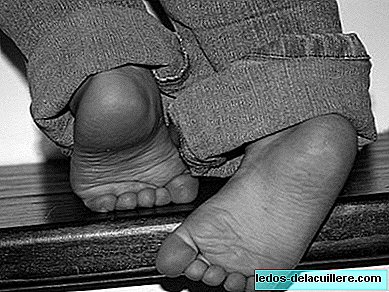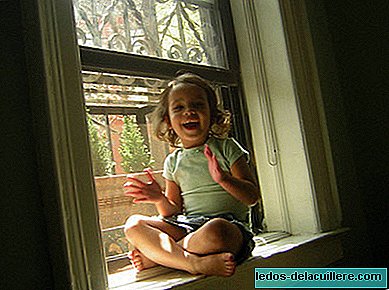
Almost all babies at birth have flat feet, that is, feet on which the plantar arch does not exist or is not fully defined. This feature is probably very useful for children at the moment they start walking, helping them to keep their balance.
Flatfoot in children is a reason for daily consultation in pediatrician's consultations, but flatfoot is physiological until three years old old, approximately.
With the passage of time, while gait is acquired and the feet are exercised walking, the foot muscles are reinforced and the plantar arch is created. But this does not usually happen completely before the age of seven or ten.
In the moments when the baby begins to walk, in addition, there is usually an increase in plantar fat, so many parents think that the child has a flat foot. However, it is early to make such a diagnosis and it will be the pediatrician who determines this fact, probably later.
There are studies that indicate that children with flat feet at three years and even at five may have a well-defined plantar arch later, around eight years.
Up to 6 years it may be normal for the bridge to exist when the foot is not supported, but disappears when the foot support occurs. But if the child is asked to stand on tiptoe, the appearance of the bridge and the rectification of the heel position will be checked. It is what is called "flat or loose flat feet" and should not be considered a problem or therefore requires treatment.

When to go to the orthopedic
From the age of five, if the pediatrician in the ordinary visits detects that the plantar arch is not defined, it could recommend an orthopedic visit to determine the importance of the alteration or a forecast of treatments if the foot does not improve or worsens.
There may also be a ligamentous hyperlaxity, overweight or obesity that favors the crushing of the plantar vault, so pediatric review is important. In addition, although very few cases occur, flatfoot may mask a motor lesion (short or spastic Achilles tendon).
In any case, rigid flat feet (Those who are not corrected by placing the child on tiptoe) or those who produce pain should be considered abnormal. Rigid flat feet are usually due to malformations of the bones or joints of the foot, and are usually disabling. They need special treatment measures, from surgery to physiotherapy.
But if the flat foot does not prevent an erect position, a correct walk or does not interfere with the possibility of performing sports activities, probably no intervention is necessary. In fact, you can walk normally supporting the entire sole of the foot, unlike the usual, which is based on three points: the tip (near the toes), the heel and the outer edge.
How to favor the appearance of the plantar arch
In cases of flat flat feet, the insoles do not serve to prevent the appearance of flat feet and they can even delay the correct development of the foot. This is because in order to develop properly the foot needs to move without retention of any kind (hence the importance of a good choice of children's shoes).
Exercises that strengthen the plantar muscles such as walking barefoot in the sand are recommended. There are studies that indicate that children who usually walk barefoot on the beach have better structured feet.
Also climb slopes, walk on uneven terrain or do flexion and extension of the toes, stand on the edge of a step supported by the toes ... these are activities that can be useful to accelerate the resolution of flat feet flexible
In short, flatfoot is normal until three years of age and from there Flatfoot in children is benign in 98% of cases and only in the remaining 2% would some orthopedic intervention be necessary, depending on the disorder produced by that flatfoot.












